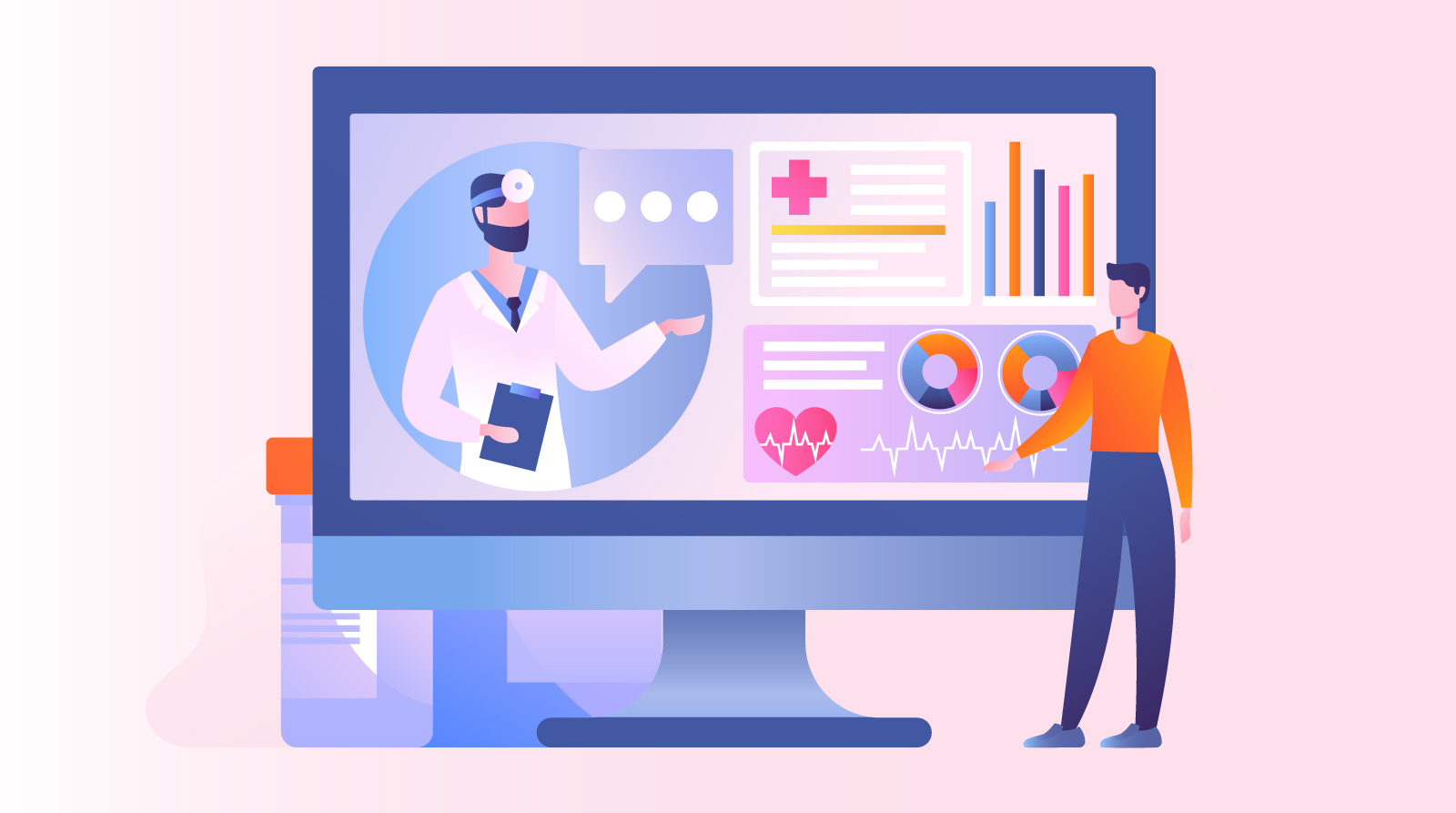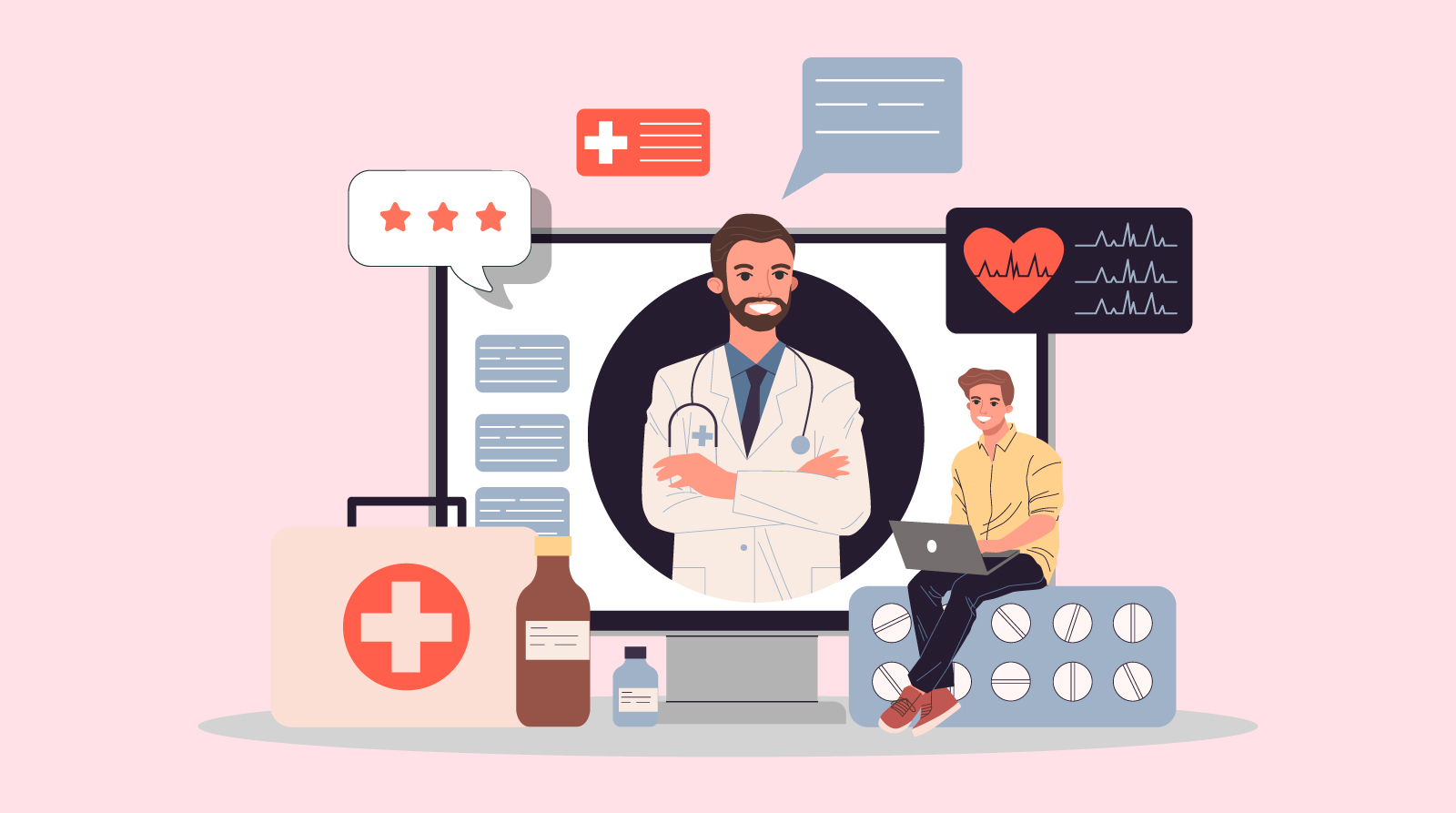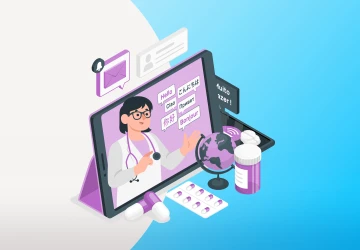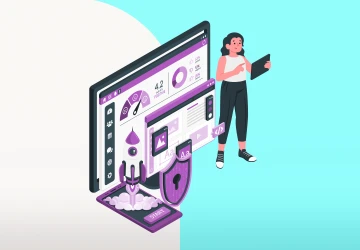Marketing landing page for clinics : A Complete Guide

Many clinics struggle to turn website visitors into actual patients.
They invest in ads and social media, but potential patients click away before taking action.
The problem isn’t the traffic—it’s where they land. A clinic’s homepage is filled with information, but a landing page is designed for one goal: conversions.
But creating a high-performing landing page for clinics doesn’t have to be complicated.
In this guide, I'll walk you through everything you need to know—landing page for clinicswhat makes an effective landing page, how to optimize it for conversions, and how to use tools like A/B testing and analytics to improve performance.
What Are Landing Pages for Clinics and Why Do They Matter?
A landing page for clinics is essentially a streamlined web page crafted specifically to convert visitors into patients.
You can think of it as the fast lane compared to your clinic's main website, which offers a more scenic route with plenty of stops, like information about services, doctors, and other details.
A landing page, though, has one mission: to get visitors to take action, whether that’s booking an appointment, requesting a consultation, or signing up for more information.
It keeps everything straightforward to avoid overwhelming visitors with too many choices.
These pages usually connect directly to ads, social media posts, or email blasts.
So, when someone clicks on one of these links, they won’t land on a busy main page where they have to dig around for what they need.
Instead, they get a page tailor-made for their journey, helping them quickly decide what to do next.
The whole setup is geared towards turning visitors into leads—every distraction is stripped away, guiding them towards that one key action they need to take.
The design of a landing page is super clean.
There’s none of that clutter—no complex menus or random links—just the essentials to help people make up their minds.
You’ll usually see a bold headline, some convincing text, a clear call-to-action (CTA), and a simple form for contact details.
And here’s the kicker: landing pages work.
They boost conversion rates like nobody’s business.
While a homepage or service page might be packed with information that could distract or even bore potential patients, a landing page keeps them laser-focused.
This direct approach is way more effective for patient acquisition.
In the realm of medical marketing, landing pages for clinics are key players.
They make sure your advertising dollars are well spent, whether you're running Google Ads, Facebook Ads, or sending out promotional emails.
These pages help maximize your budget by funneling potential patients to a page that’s all about engagement.
Plus, they offer valuable insights since you can track how well they're performing and tweak your strategy as needed.
But creating a high-performing landing page for clinics doesn’t have to be complicated.
With Alweb.ai, you can design and launch a professional, conversion-focused landing page in just 60 seconds—no coding, no technical skills required.
Enjoy features like SEO optimization, social media integration, built-in analytics, and a user-friendly control panel to manage everything with ease.
What Elements Should a High-Converting Clinic Landing Page Include?
1. Clear and Compelling Headlines
A strong, attention-grabbing headline is one of the most important parts of a high-converting clinic landing page.
It’s the first thing visitors see, so it needs to make an impact right away.
A good headline is clear, to the point, and instantly tells visitors what they can expect.
It should focus on their needs—whether it’s finding the right treatment, booking an appointment, or getting expert care.
The key is to keep it simple and highlight the value you offer.
Instead of something generic like “Welcome to Our Clinic,” a stronger headline would be “Get Expert Care & Fast Appointments at [Your Clinic Name]” or “Trusted Healthcare, Personalized for You”.
A great headline sparks interest and makes visitors want to keep reading, which means they’re more likely to take action—whether that’s filling out a form, calling the clinic, or booking an appointment.
2. Focused and Concise Content
No one likes clicking on a webpage and feeling bombarded with too much information.
When people visit landing pages for clinics, they’re looking for something specific—whether it’s to book an appointment, learn about a treatment, or find a trusted doctor.
If they have to scroll through long paragraphs or dig for the information they need, they’ll probably leave without taking action.
That’s why keeping your content clear and to the point is the key to turning visitors into actual patients.
The best way to do this is to keep things simple and easy to read.
Skip the complicated medical terms and long-winded explanations.
Instead, talk to visitors in a friendly, straightforward way and focus on what matters—how your clinic can help them and why they should choose you.
There’s no need for fluff—just give them the important details they’re looking for.
The structure of your page also makes a huge difference.
Most people won’t sit and read every word—they’ll scan for key information.
That’s why short paragraphs, bullet points, and clear headings make it easier for them to find what they need fast.
Be sure to highlight your services, key benefits, and what sets your clinic apart so visitors can quickly understand why they should trust you with their care.
Adding visuals can also make your landing page more engaging.
A well-placed photo of your clinic, friendly staff, or happy patients helps build trust and makes the page feel more inviting.
A short video explaining a treatment or featuring patient testimonials can also give visitors more confidence in choosing your clinic.
3. Strong Call-to-Action (CTA)
A strong call-to-action (CTA) is what turns visitors on landing pages for clinics into actual patients.
It’s the final push that tells them exactly what to do next—whether it’s booking an appointment, calling the clinic, or signing up for more information.
Without a clear and inviting CTA, even the most well-designed patient acquisition pages won’t be effective.
The key is to make sure the CTA stands out and feels natural, making it easy for visitors to take the next step.
For a CTA to work, it has to be easy to find.
On landing pages for clinics, it should be placed where visitors can see it right away—at the top of the page and again throughout, so they never have to search for it.
Making the CTA bold, using a button, or choosing a standout color can help draw attention.
But what it says matters just as much.
Instead of something generic like "Submit" or "Click Here," a high-converting CTA should be clear and action-driven, like "Book Your Appointment Now" or "Get a Free Consultation Today."
This way, visitors know exactly what to expect and feel encouraged to take action immediately.
Creating a sense of urgency can also help.
Adding time-sensitive phrases like "Limited Slots Available" or "Same-Day Appointments" makes visitors feel they need to act fast instead of putting it off.
On patient acquisition pages, this can make a huge difference in conversion rates.
Pairing the CTA with trust-building elements like testimonials, success stories, or certifications can also help reassure visitors and make them feel confident in taking the next step.
The best medical campaigns make sure the CTA matches what visitors are looking for.
If a landing page for clinics is promoting a specific treatment, the CTA should be tailored to that, like "Learn More About Our Laser Eye Surgery" or "Start Your Smile Makeover Today."
4. Trust-Building Elements
We all look for trust and reassurance before making big decisions, and choosing a healthcare provider is no different.
When someone visits landing pages for clinics, they want to feel confident that they’re in good hands.
If anything seems unclear or untrustworthy, they’ll likely leave without booking an appointment.
That’s why trust-building elements are so important—they help turn visitors into actual patients.
One of the easiest ways to build trust is through patient testimonials.
Seeing real stories from others who had a great experience reassures potential patients that they’re making the right choice.
Testimonials that highlight successful treatments, friendly staff, and a smooth experience can ease any doubts.
A few well-placed testimonials on patient acquisition pages can make a big difference in convincing visitors to book an appointment.
Another powerful trust signal is showing certifications, accreditations, and professional affiliations.
When a clinic is recognized by respected medical institutions or has won industry awards, it tells visitors that they’ll receive top-quality care.
People also feel more comfortable when they know who will be treating them.
When potential patients see the faces behind the clinic and read about their qualifications and experience, they feel a stronger sense of connection and trust.
Security is another key factor in building trust.
People need to feel safe when submitting their personal information online.
Making sure that all forms on the landing page are secure and compliant with privacy regulations like HIPAA or GDPR reassures visitors that their data is protected.
A simple message about the clinic’s commitment to patient confidentiality can go a long way in building confidence.
Lastly, clear and accessible contact information is essential.
When visitors can easily find the clinic’s phone number, email, and address, they feel reassured that the clinic is real and approachable.
Offering multiple ways to get in touch—whether it’s a phone call, WhatsApp, or live chat—makes it even easier for potential patients to ask questions and book their first appointment.
5. Clean and Uncluttered Design
In healthcare, trust is everything.
A cluttered, confusing webpage can make you second-guess a clinic's professionalism.
So when you land on landing pages for clinics, you should feel like everything's clear and straightforward.
If a page is jam-packed with too much text, loads of images, or just too much going on, it can be tough to find what you need.
That’s where a clean and uncluttered design comes into play.
It makes the whole experience smoother and more welcoming, letting potential patients focus on what's important—like booking an appointment or finding out more about what the clinic offers.
Keeping it simple is the way to go.
Landing pages for clinics are best when they just stick to the essentials.
No one wants to wade through dense paragraphs or be distracted by flashy graphics.
The page should make it easy for you to figure out how to take the next step, whether that's booking a consultation, giving the clinic a call, or filling out a contact form.
A neat design means you won't feel bombarded, and it's much easier to make a decision confidently.
The use of whitespace is crucial for that clean and uncluttered look.
Spacing out the text, images, and buttons stops things from getting too cramped and helps make the page readable.
Plus, it draws your eye to the important stuff—like the call-to-action (CTA) buttons or crucial service details.
Visual hierarchy also matters a lot.
Organizing the information into distinct sections with headings, subheadings, and short paragraphs lets you scan the page.
Most folks don’t read every single word; they just glance through to pick out the key info.
Structuring the page with clear markers and bullet points ensures you don't get lost or frustrated.
And don’t forget about responsive design.
With so many people using their phones and tablets to go online, landing pages for clinics need to work well across all devices.
A page that’s a breeze to navigate on a desktop but a nightmare on a phone is going to turn people away.
So, making sure the page adapts well to whatever device you're using means a better experience for everyone, no matter how they access it.
6. Fast Load Times
In today’s fast-moving digital world, fast load times aren’t just a nice bonus—they’re a must, especially for landing pages for clinics.
When someone visits your site, they expect it to load almost instantly.
If it takes too long, chances are they’ll get frustrated and leave before they even see what your clinic offers.
A slow page means missed opportunities, fewer appointments, and a higher chance that potential patients will choose another provider instead.
Studies show that even a tiny delay can have a big impact. If a page takes just one extra second to load, the chances of a visitor leaving jump by 32%.
If it takes five seconds or more, nearly 90% of visitors will bounce—meaning they’ll leave without clicking anything.
That’s a huge loss, especially for clinics trying to attract new patients.
Speed also matters for search rankings.
Google prioritizes fast-loading pages, so if your site is slow, it’s less likely to appear at the top of search results.
That makes it harder for potential patients to find you.
A fast, well-optimized site not only improves user experience but also helps your clinic get noticed online.
The good news?
There are simple ways to make your landing pages load faster.
Optimizing images, reducing unnecessary code, and using a reliable hosting provider can all speed things up.
Enabling browser caching (which stores parts of your website on a visitor’s device) also helps pages load quicker when someone returns.
7. Lead Capture Forms
You need to connect with potential patients the moment they show interest and lead capture forms make that easy.
When someone lands on landing pages for clinics, they may not book an appointment right away—but that doesn’t mean they’re not interested.
A well-placed form lets you collect their contact details—like name, email, and phone number—so you can follow up, answer their questions, and help them take the next step toward booking an appointment.
The best lead capture forms are simple and easy to fill out.
If a form asks for too much information, visitors might feel overwhelmed and leave without completing it.
But if it asks for too little, you might not have enough details to follow up properly.
The key is to strike the right balance—asking for a name, email, and phone number is usually enough to start the conversation.
Some clinics also include a field for specific health concerns or preferred appointment times, but it’s important to keep things quick and hassle-free.
Where you place your form is just as important as what’s in it.
It should be highly visible, ideally above the fold—meaning visitors see it right away without scrolling.
This makes it more likely they’ll notice and fill it out.
Some landing pages for clinics also include the form in multiple spots so visitors who need more time can find it easily when they’re ready to act.
The way the form looks and what it says also matter.
Instead of a dull "Submit" button, use engaging call-to-action (CTA) phrases like "Get Started," "Request a Consultation," or "Claim Your Free Health Assessment."
These small changes make the form feel more welcoming and encourage visitors to take action.
And since many people browse on their phones, your form should be mobile-friendly so it’s easy to fill out on any screen size.
Trust is also a big factor. People need to feel safe sharing their personal information, especially when it involves their health.
A simple privacy note—like “We respect your privacy and will never share your information”—can go a long way in making them feel more comfortable.
8. Visual Elements
Who doesn’t love a website that looks amazing and is easy to navigate?
Visual elements are a game changer when it comes to landing pages for clinics.
They don’t just make the page look good; they make it work effectively too.
When a page has the right mix of stunning images, appealing colors, and engaging videos, it creates a welcoming vibe that makes visitors feel comfortable and ready to take action, like booking an appointment or asking for more info.
High-quality images help you visualize what it’s like to be there even before you walk through the doors.
Videos ramp up this engagement even more.
Maybe there’s a quick hello from the doctors, a virtual tour of the clinic, or stories from satisfied patients.
Videos make you feel like you already know the clinic and the people there.
Consistent branding across the page also builds trust.
A matching color scheme, the same fonts, and a neat design that aligns with the clinic’s overall look make everything feel professional and cohesive.
It reassures you that you’re dealing with a reliable clinic.
And don’t forget about infographics—they can be a fantastic way to break down more complex medical info into chunks that are easy to understand and engaging.
9. Consistent Messaging
You know the saying—consistency is key, and that couldn’t be more true for landing pages for clinics.
When someone visits your page, they should instantly recognize your brand, understand what you offer, and feel sure they’re in the right place.
If your messaging is all over the place—switching tones, making conflicting promises, or lacking a clear focus—visitors might feel confused or even skeptical.
A consistent message builds trust, strengthens your clinic’s identity, and makes it easier for people to take action.
Every part of your landing page, from the headline to the call-to-action (CTA), should match your clinic’s values and services.
If your brand is all about personalized, patient-focused care, your messaging should reflect that warmth and approachability.
Visitors should never feel a disconnect between what they see on your landing page and what they’ve heard about your clinic from an ad, social media post, or even word of mouth.
This consistency should also carry over from your marketing campaigns.
If someone clicks on an ad that says "Same-Day Appointments with Top Specialists," but the landing page only talks about general healthcare services, they might feel misled and leave.
Patient acquisition pages need to match the expectations set by your ads, emails, and social media content.
When everything aligns, visitors feel reassured and are much more likely to book an appointment or reach out for more details.
10. Analytics and A/B Testing
To make sure your landing pages for clinics are working, you need to know what’s helping visitors stay and take action—and what’s making them leave.
That’s where analytics and A/B testing come in.
These tools help you see how people interact with your page, what grabs their attention, and what might be driving them away.
By tracking performance and making smart tweaks, you can turn a landing page from just another webpage into a powerful tool that attracts and converts visitors into patients.
Analytics gives you the numbers and insights you need.
Tools like Google Analytics can show you how many people visit your page, how long they stay, and where they lose interest.
If you notice that visitors are leaving quickly without taking action (a high bounce rate), something might be off—maybe your page takes too long to load, the messaging isn’t clear, or the CTA (call-to-action) isn’t convincing enough.
A/B testing, also called split testing, helps you figure out what works best by comparing two different versions of a landing page.
For example, you could test two different headlines, different CTA buttons, or even different images.
Half of your visitors see Version A, while the other half see Version B.
The version that gets more engagement—whether it’s more appointment bookings, form submissions, or calls—tells you what’s resonating better with potential patients.
Instead of guessing, you’ll have real data to back up your decisions.
FAQs
What Is the Purpose of a Landing Page in Marketing?
A landing page is designed to drive a single action, like booking an appointment or signing up, making it a powerful tool for converting visitors into leads or patients. Unlike general webpages, it eliminates distractions and keeps users focused on taking the next step.
Why Is Marketing Important to a Medical Practice?
Marketing helps clinics attract new patients, build trust, and stay competitive by increasing visibility and engagement through ads, social media, and online presence.
Why Is It Important to Use Specific Landing Pages for Your Campaigns Versus Sending Traffic to Your Homepage?
Landing pages provide a focused, conversion-driven experience, ensuring that visitors take action instead of getting lost in general site content. A homepage is broad, while a landing page is tailored to match the intent of each ad or campaign.
What Is the Difference Between a Landing Page and a Marketing Site?
A landing page is a single-purpose page built for conversions, while a marketing site provides broader information about a business or service. Landing pages are action-oriented, whereas marketing sites offer detailed navigation and multiple user paths.
Final Thoughts
As promised, we’ve covered the essentials—from crafting clear headlines and focused content to integrating strong CTAs and analytics.
Every element on your landing page must work together to convert visitors into patients.
My advice: continuously test and refine your page to align with evolving patient needs and your marketing goals.
A data-driven, patient-focused approach is the key to success.
Ready to elevate your patient acquisition strategy?
Reach out today for a personalized consultation and discover how we can help you maximize your clinic’s online potential.







